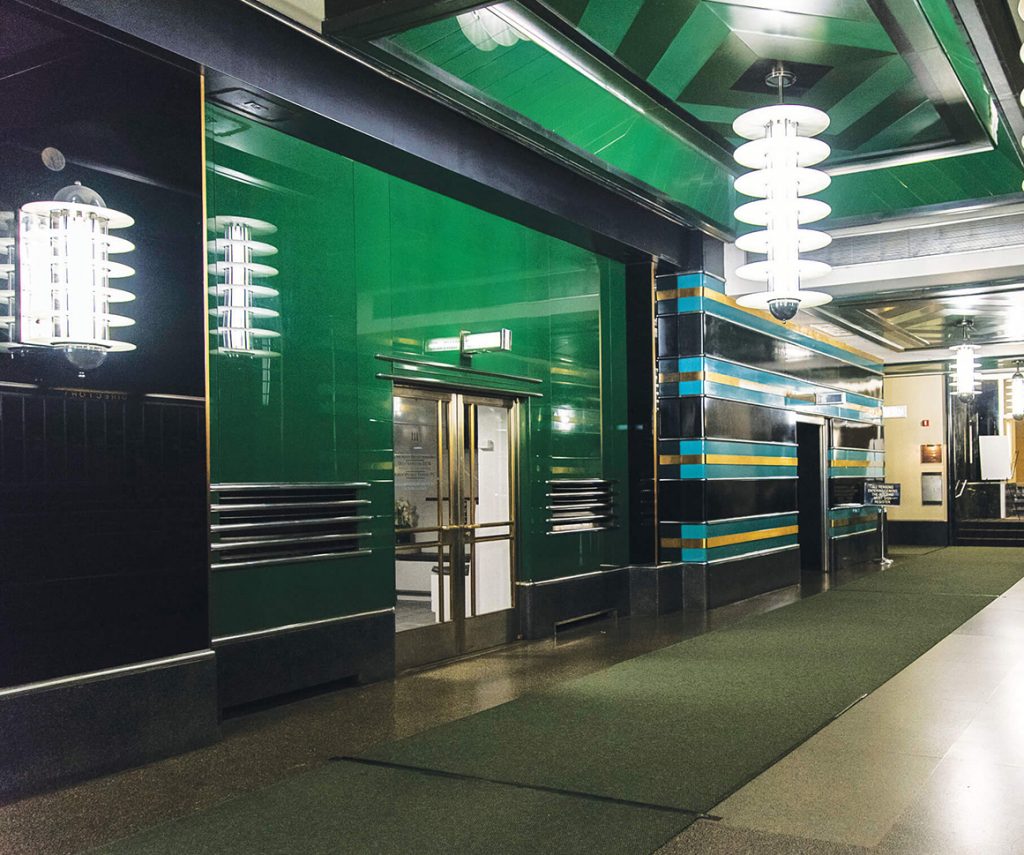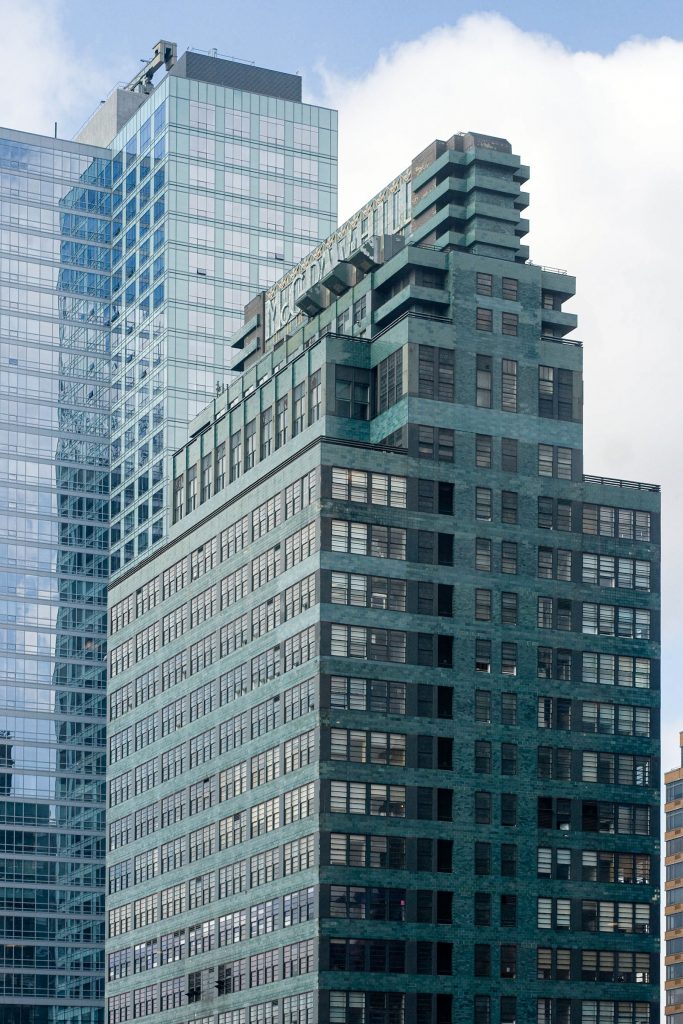News March 2021


McGraw-Hill Building lobby at risk
Another lobby is making the news. At a February 9 virtual Landmarks Preservation Commission (LPC) meeting to review exterior modifications to the landmarked McGraw-Hill Building at 330 W 42nd Street in Manhattan, preservationists renewed their call for the Commission to protect the building’s wildly polychromatic Art Moderne lobby. Designed by Raymond Hood in association with Frederick Godley and Jacques André Fouilhoux and completed in 1931, the lobby shares a preservation limbo with other landmarked office buildings: their integral lobbies—often their showpieces—lack interior landmark status and can be demolished or altered in any way.
Hood’s 35-story tower is probably most known on the skyline for its blue-green terra cotta façade and ribbon windows—and its giant, deco-lettered rooftop sign. The latter rivals Philadelphia’s PSFS Building in terms of constructed branding. Especially noteworthy is that the terra cotta subtly changes color as it moves up the façade. At street level, bands of black and turquoise terra cotta with bronze-tone metal accents smoothly corner into the T-shaped lobby where they meet walls of black stone and emerald green enameled steel panels. All of which are basically intact.
The McGraw-Hill Building was designated a NYC landmark in 1979. The proposed changes before the commission, which concerned storefronts, infill panels and signage—all falling under the 1979 designation—were well resolved and received unanimous approval at the February 9 hearing. While the building owner, Deco Tower Associates, had proposed altering the rooftop sign to read “330 W 42 ST,” pressure from local CB 4 and others convinced them to change course. The 11-ft-tall terra cotta lettering has undergone restoration and will remain “McGraw-Hill.”
The McGraw-Hill lobby is rare in that it is so integrally connected to the exterior and because there are so few surviving public Art Moderne interiors of this scale. The owner’s renovation team of MdeAS Architects and Higgins Quasebarth & Partners has stated that designs for the lobby are not final or ready to be made public. Higgins Quasebarth principal Bill Higgins says they are trying to achieve a “harmonious combination of new and old, both in terms of actual fabric that is kept in place and in terms of the language of the new fabric and the new design for portions of the lobby in order to meet contemporary use and circulation.” Obtaining an interior designation is the surest means of keeping that “harmonious combination” respectful of Hood’s original design. Preservation advocates leading the effort submitted a Request For Evaluation (RFE) for the lobby public spaces of McGraw-Hill to the LPC on February 17.
DOCOMOMO US/New York Tri-State has joined the Alliance to Save the McGraw-Hill Lobby, which now includes over 40 preservation advocacy organizations and experts. The Alliance’s joint letter urging quick action on an interior designation was sent to LPC chair Sarah Carroll March 1. The Art Deco Society of New York has started a petition to the LPC requesting the same. You can sign the petition here. Letters of support from concerned individuals are also needed and can be sent directly to the LPC. Details available on the Society’s website.
> > See March 16 post for latest news on the McGraw-Hill Building lobby
“Preservationists launch effort to protect a cherished Raymond Hood lobby in Manhattan’s McGraw Hill building,” Architect’s Newspaper, February 12, 2021
“Atop the McGraw-Hill Building, the Name Stays,” The New York Times, February 26, 2021. (Includes slide show).
“Change Is Coming to the McGraw-Hill Building’s Art Deco Lobby. Or Is It?,” Curbed, February 12, 2021.